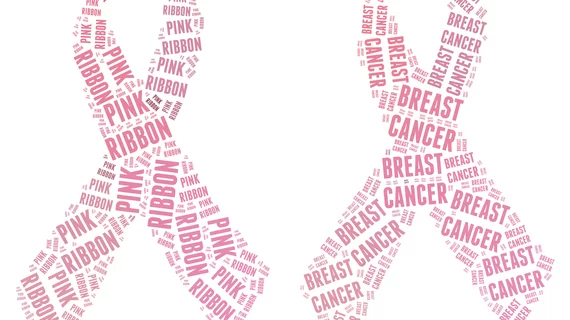Cardiac monitoring may protect high-risk breast cancer patients against heart failure
While heart failure (HF) is an uncommon complication of breast cancer, a new study in the Journal of the American College of Cardiology notes individuals treated with trastuzumab-based chemotherapy have a higher risk for HF—but they are not monitored for it, despite recommendations.
Trastuzumab-based chemotherapy is generally for patients with the aggressive HER2-positive breast cancer. Though beneficial, the treatment is associated with levels of cardiotoxicity.
Led by Mariana Henry, BS, of the University of Texas MD Anderson Cancer Center in Houston, the researchers sought to first determine the rate of chemotherapy-related cardiotoxicity. They then estimated adherence to recommendations for cardiac monitoring among breast cancer patients treated with trastuzumab-based chemotherapy, specifically.
Henry and colleagues identified and studied more than 16,000 breast cancer patients who were treated with chemotherapy within six months of diagnosis. Of the study cohort, 4,325 patients had received trastuzumab-based chemotherapy. They found 4 percent of patients in the cohort developed HF after chemotherapy. Eight percent of the trastuzumab-treated patients developed HF, compared to roughly 3 percent of patients who did not receive trastuzumab.
The researchers also found an increase in HF risk as the patients aged. Cardiotoxicity was identified in only 2 percent of patients younger than 35, but the rate increased along with age. About 8 percent of patients who were 65 and older exhibited cardiotoxicity.
Given that trastuzumab-treated patients and older patients were at higher risk for HF, the researchers gauged if this high-risk population was receiving the recommended cardiac monitoring suggested by the National Comprehensive Cancer Network (NCCN). The NCCN recommends cardiac monitoring before initiating trastuzumab treatment and every three months during treatment.
“Because cancer therapies are associated with rare but clinically relevant cardiac toxicities, we should continue to look for a more cost-effective way of detecting cardiotoxicity, with the understanding that the primary objective is not only to identify toxicities but to improve outcomes,” the researchers wrote.
The researchers found, of the patients who were treated with trastuzumab, less than half—46 percent—received guideline-adherent cardiac monitoring. Heart failure, the researchers noted, was identified in 10 percent of patients who underwent the recommended amount cardiac monitoring, compared to 7 percent who did not get the recommended amount of monitoring.
Henry et al. found younger breast cancer patients were less likely to receive cardiac monitoring during trastuzumab treatment than older patients.
“We must remember that while cardiac monitoring is recommended in different guidelines, such recommendations are not based on category 1 data, and the timing recommended, and the intervals of testing are rather arbitrary," Henry said in a prepared statement. "In examining the rate of both cardiac monitoring and cardiotoxicity we could begin to address the controversial issue of whether cardiac monitoring is warranted in young breast cancer patients."
Related Cancer Therapy Cardiotoxicity Content:
Succeeding with Cancer: Using Imaging to Avoid Treatment-induced Heart Failure
Providers must rethink traditional imaging approaches to prevent cardiotoxicity in cancer patients
CV programs struggling to keep up with growing demand for cardio-oncologists
Machine learning predicts drug cardiotoxicity
Prior cardiotoxicity linked to 30% increased risk of CHF during pregnancy
CV outcomes underreported in pivotal anticancer trials
CDK2 inhibitors protect cancer patients from anthracycline-induced cardiotoxicity
Genetic variants could be key to identifying chemo-induced cardiotoxicity
T2 mapping may uncover cardiotoxic marker early enough to prevent heart failure
Some chemo drugs might be more heart-safe than others
Cardiac MRI-derived T2 mapping may help heart failure patients
Genetic variant linked to chemotherapy-induced cardiomyopathy
Study calls for better collaboration between cardiologists, oncologists

